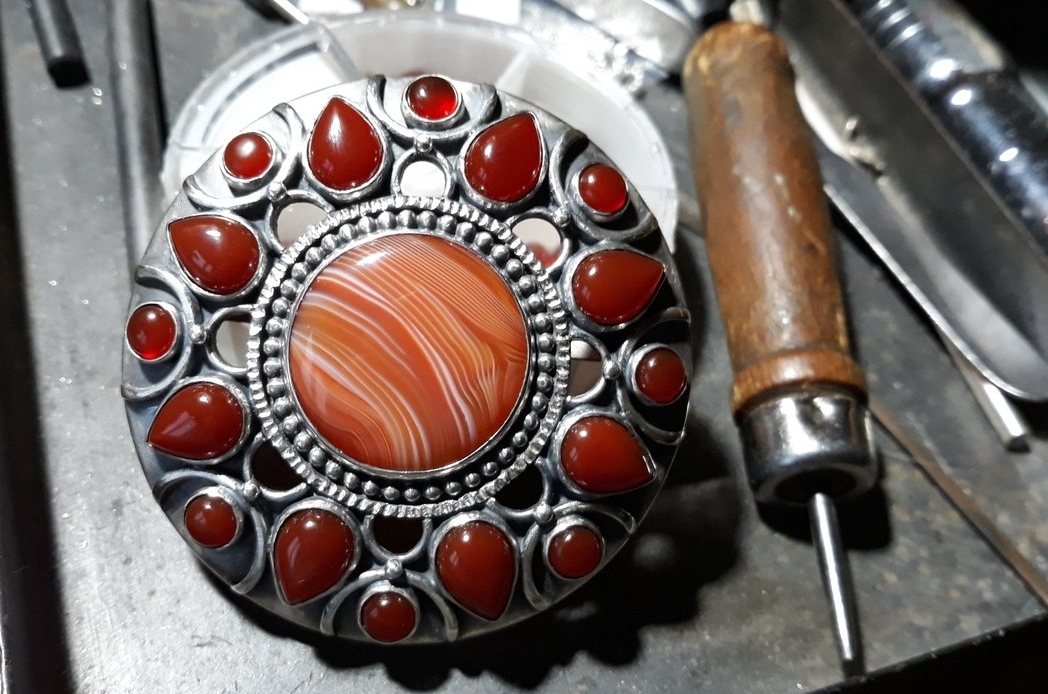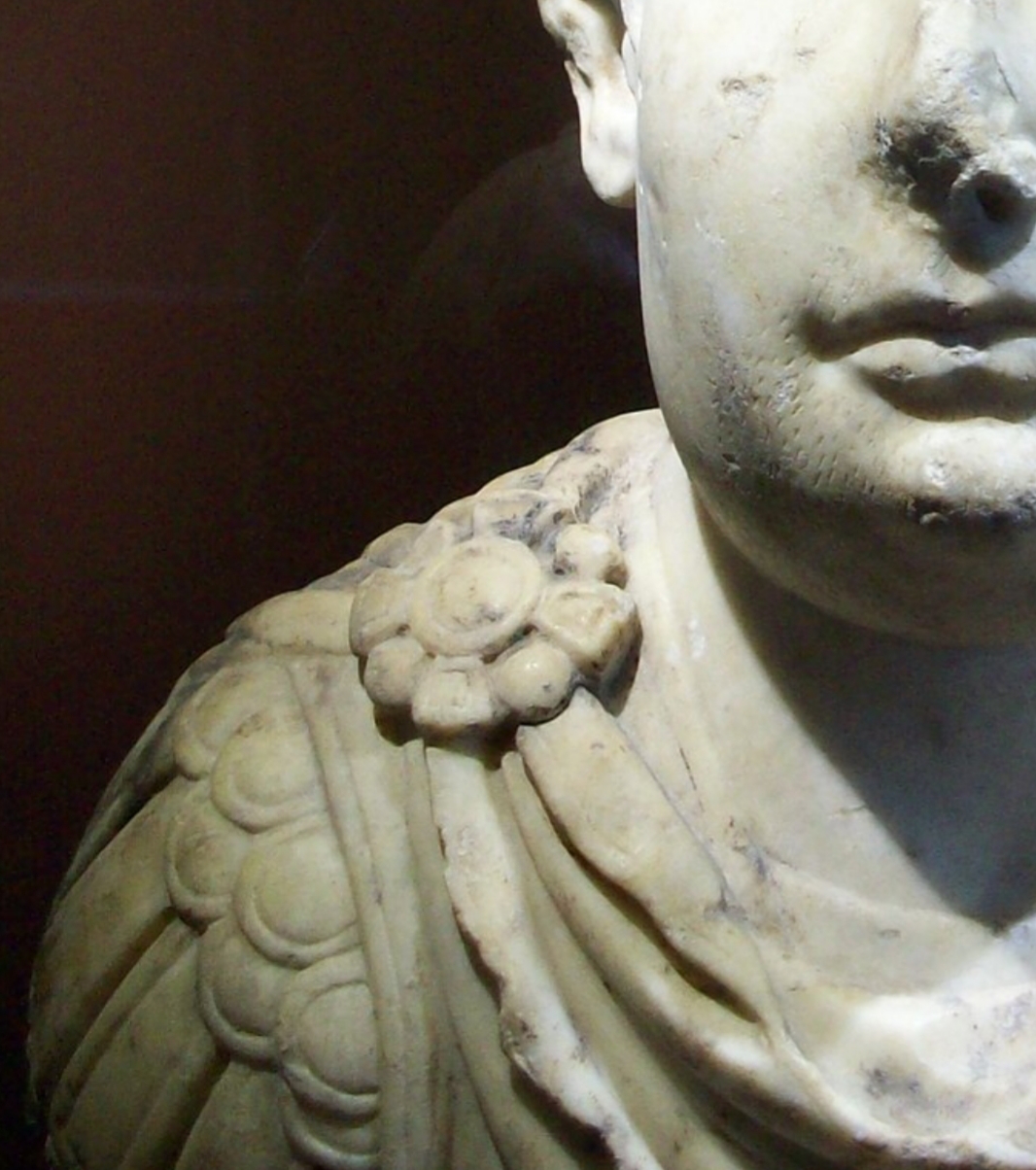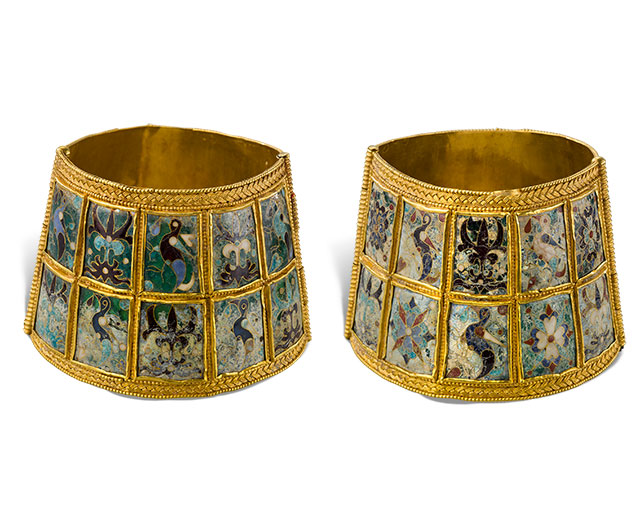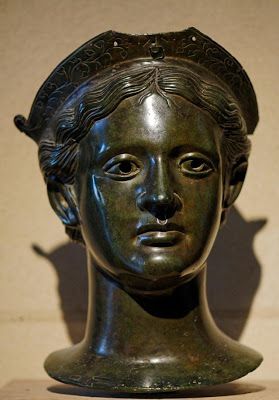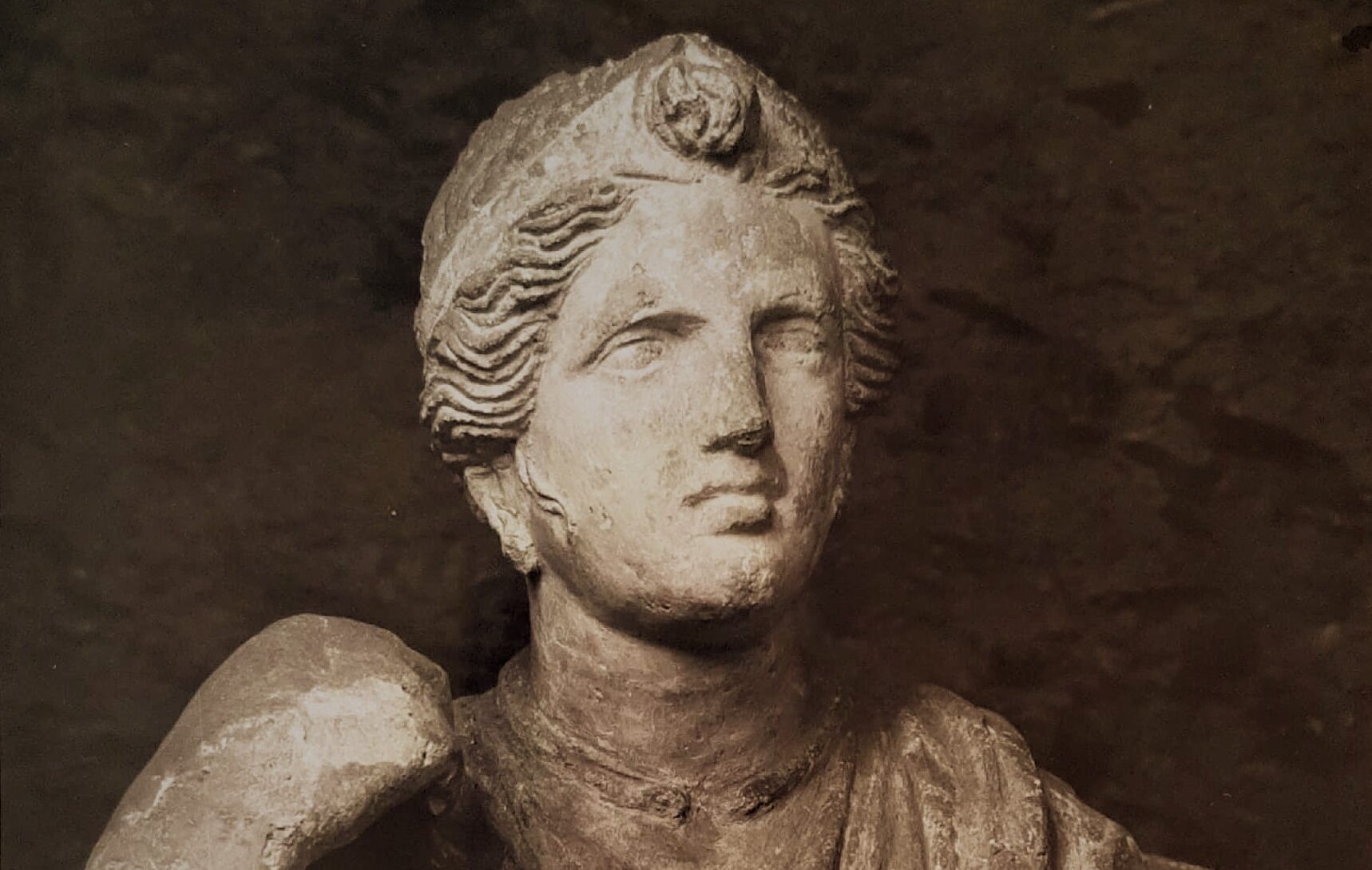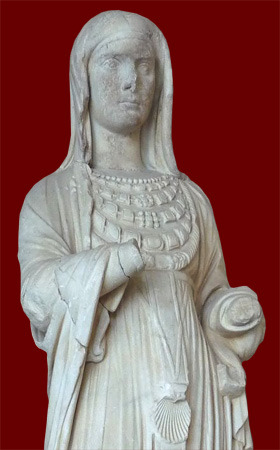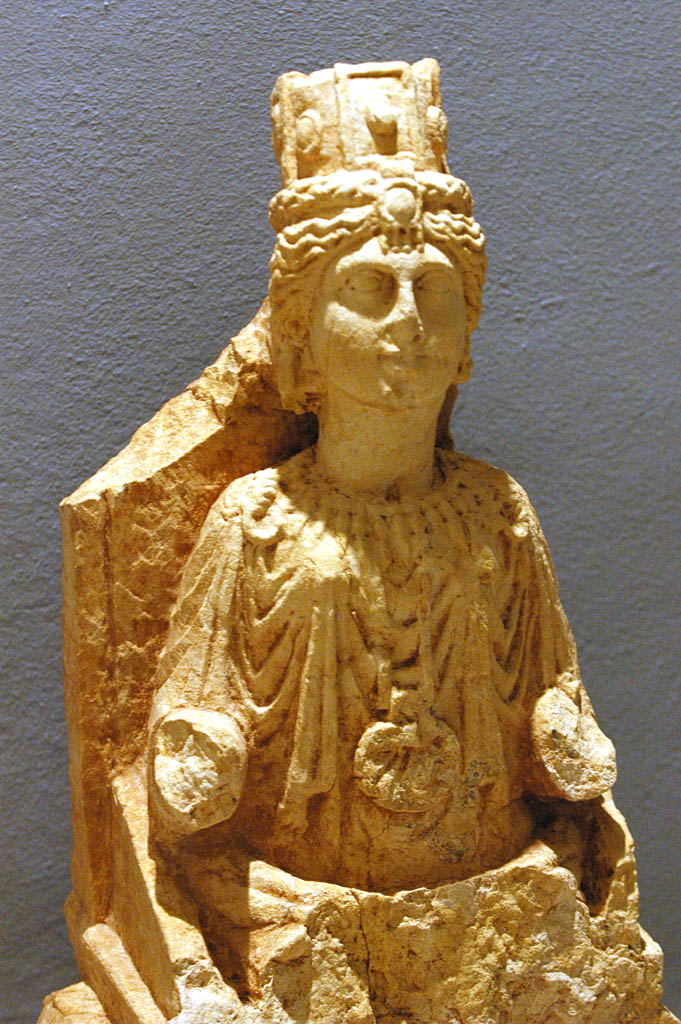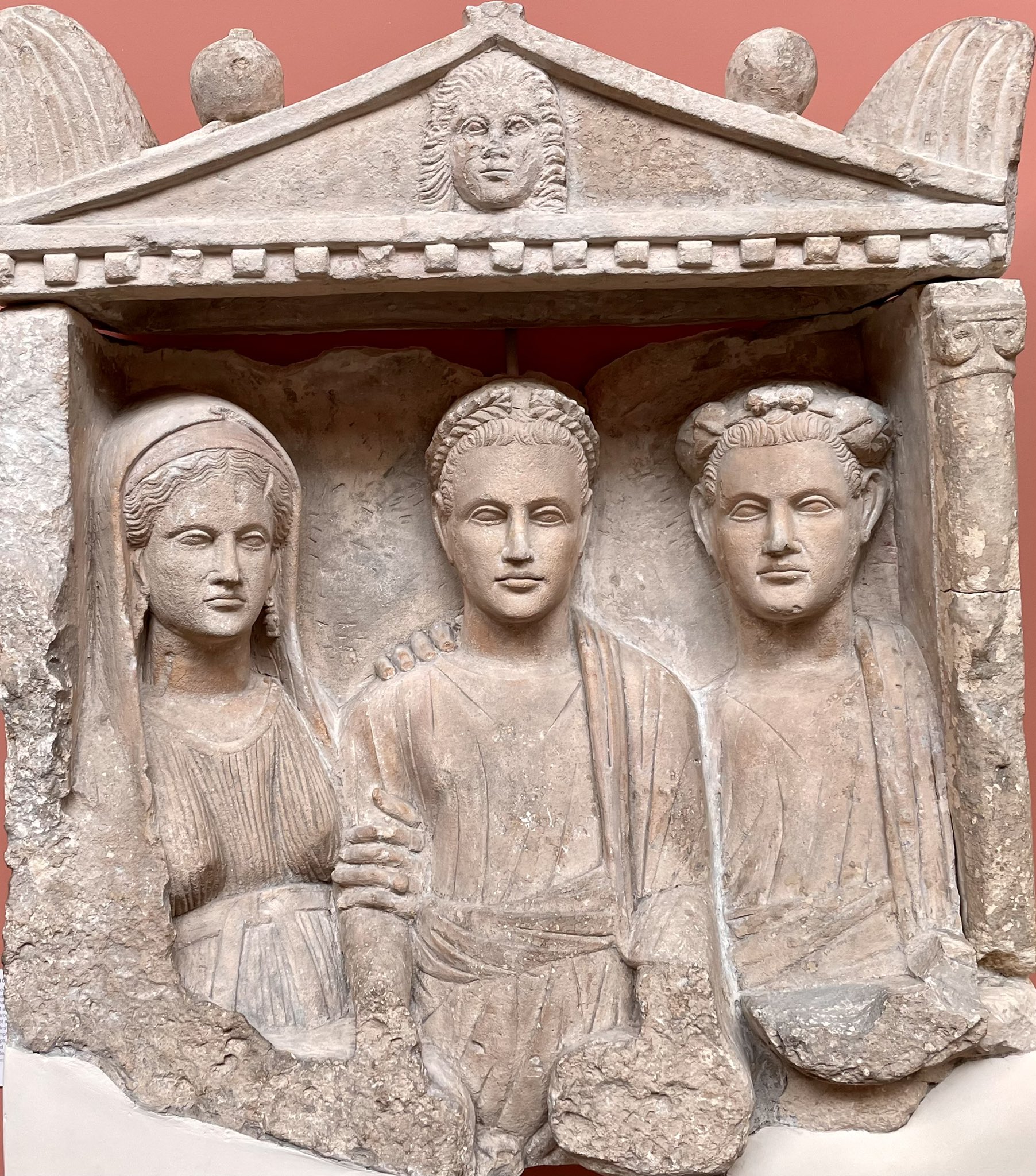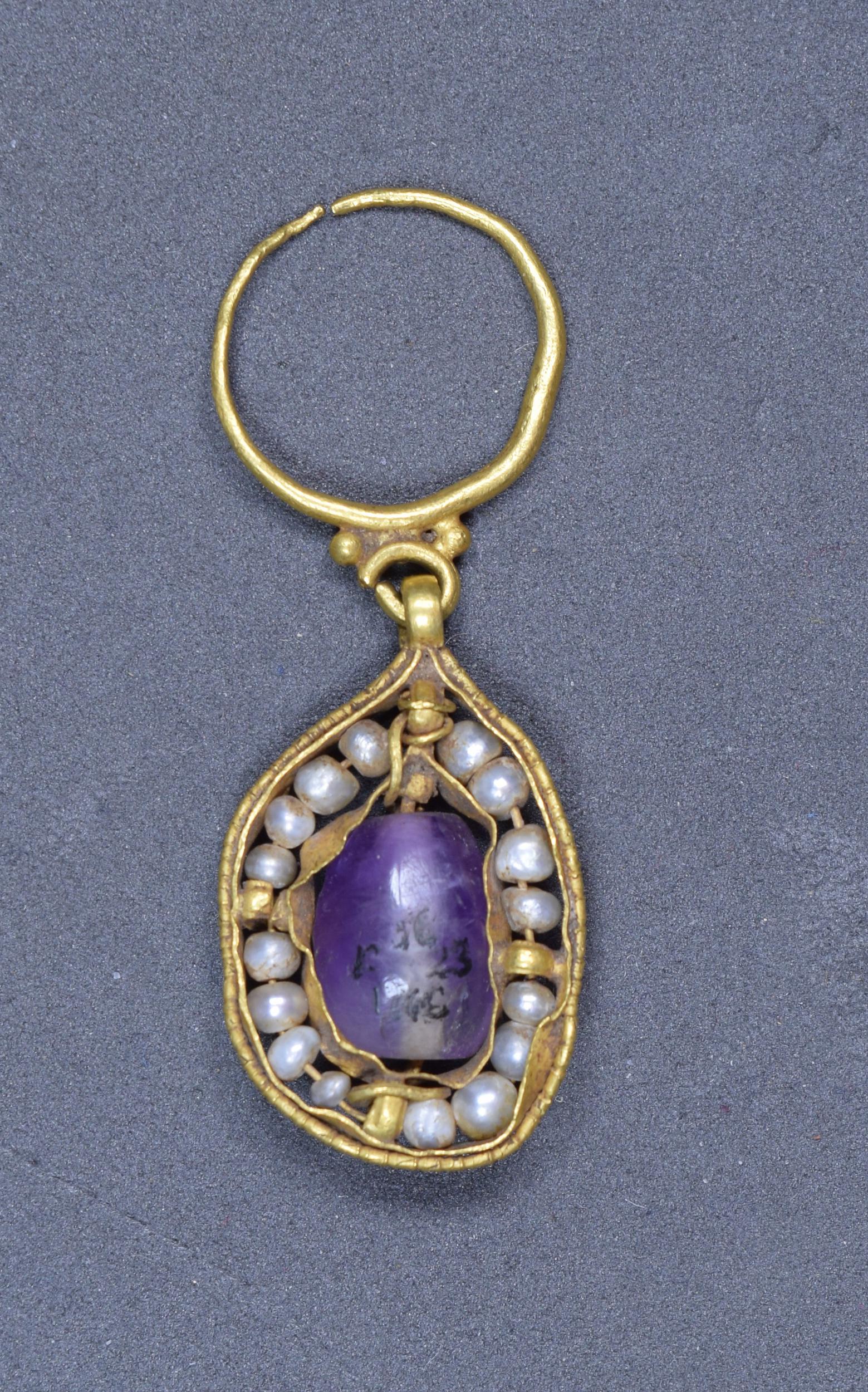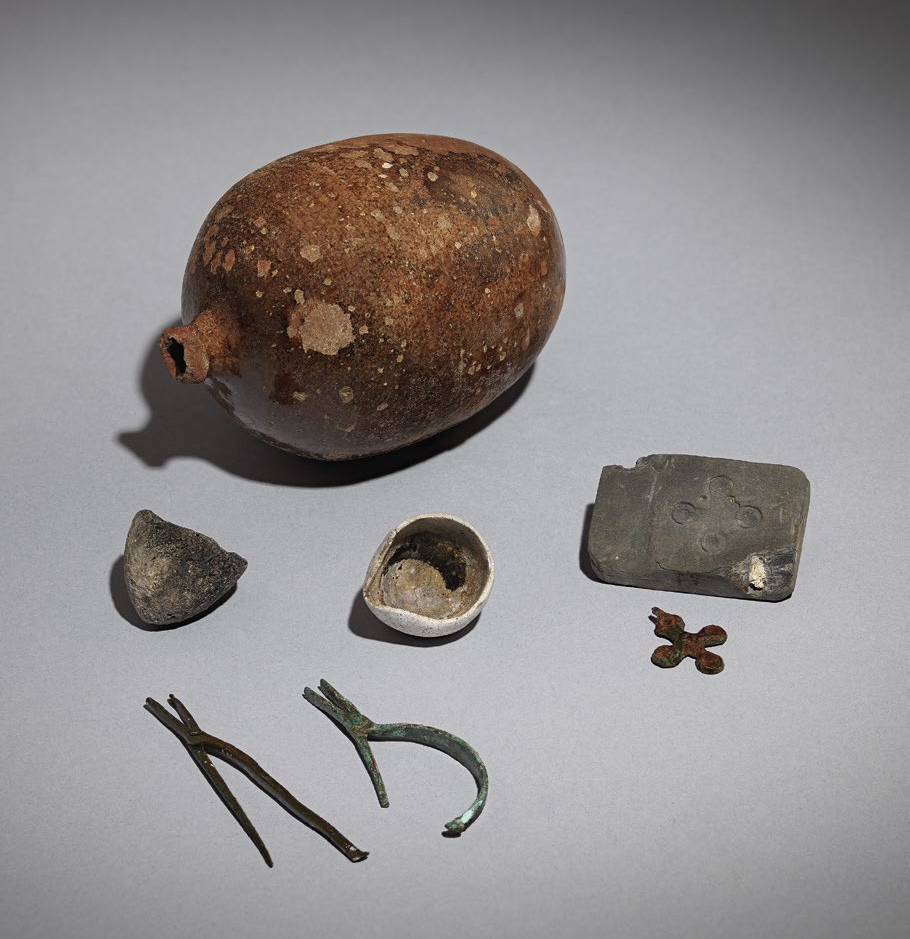page in progress

Reclining woman from a sarcophagus lid, Rome, Galleria Borghese 187 (Istituto Centrale per il Catalogo a la Documentazione). late 2nd – early 3rd century
The woman wears a “pearl” diadem typical for the Late Antiquity.
The hair is largely original
SOURCE:
Hair and the Artifice of Roman Female Adornment
Elizabeth Bartman https://www.jstor.org/stable/507324

CLXXXVII. Arte Romana. Coperchio di sarcofago, con figura matronale
stesa e posata sul fianco. Epoca degli Antonini. >>
Il Museo e la Galleria Borghese
by Venturi, Adolfo, 1856-1941
https://archive.org/details/ilmuseoelagaller00vent/page/42/mode/2up

Portrait statuette of Empress, Aelia Flacilla or Pulchérie, 4th century, Cyprus
She wears a tiara made up of two contiguous rows of pearls framing a central oval-shaped stone. The central cabochon which had to be added is missing now [BNF record]

Empress Theodora (?) or Licinia Eudoxia
Female head of an empress long recognized as Theodora and now identified with Licinia Eudoxia, wife of Valentinian III.
From Milan. Mid-sixth century
“The woman wears a crown comprising a pearl- and jewel-laden diadem encircling a snooped hairstyle: tall, with the diadem high off the brows, and the entire mass balanced farther back on the head. The three hoops of pearls over the cap are all longitudinal, and only the central one with a double row. The diadem itself has two rows of pearls and an elaborate central jewel with three pendants; it is tied behind the head with an elaborate knot.
This diadem type cannot be dated earlier than A.D. 500. On the sides there are circular indentations that indicate where prependoulia would have been attached. This element is important, because the supposed lack of prependoulia has been recently used to ascribe this piece to the Theodosian period. The head has also been seen as sharing similarities with a statuette of an empress often identified as Aelia Flaccilla (LSA-568) and as Galla Placidia.”

Empress Licinia Eudoxia (?), 4th century

0)
Read more >> http://colorsandstones.eu
Galla Placidia

CORONAE, STEPHANAI E DIADEMATA https://core.ac.uk/display/161407923
pp 326
Definizione: testa di Elia Galla Placidia, sposa di Costanzo III.
Collocazione: Roma, Museo Nazionale dell’Alto Medioevo, n. inv. 2603.
Provenienza: ignota.
Materiale: marmo. Misure: h. complessiva 0,28 m
Description: head of a woman, identified with Galla Placidia, although some scholars are in doubt about the
recognition. The face, from the features rather square and with jaws evident, portrays an aged woman rather advanced, as the expression lines on the sides of the nose e mouth and cheeks soft e falling. The eyes are elongated, defined with iris and pupil, by thin upper eyelids and those swollen and heavy lower; the mouth is narrow and thin. Hair is divided into single locks folded back on themselves and rounded at the front, close together to form almost a sort of helmet that completely covers the ears; on the back of the head the hair is tied in a braid and wrapped in two low knots just above the nape of the neck.
Datazione: la testa è ascrivibile alla prima metà del V secolo d.C.
Type of ornament: Type IV, mixed tiara. Galla Placidia wears a double band mixed type diadem, the lower one composed of a twisted band and the upper one composed of quadrangular plates inside which precious gems seem to be set, with an oval medallion in the middle, in forehead match.
Bibliografia: CALZA 1972, pp. 336-338, n. 240; tav. CXVII, 426a-b; CALANDRA 2012b, p. 267

http://laststatues.classics.ox.ac.uk/database/discussion.php?id=778
Portrait head of Empress. From the environs of Rome. Mid-fourth to mid-fifth century.
“DESCRIPTION In the modern era the head was cut evenly through the top of the neck and mounted on an unrelated statue (now removed). The nose is restored, and the projecting elements at the top of the diadem are broken.
The pupils of the eyes are indicated by deep U-shaped depressions. The hair and diadem are rendered almost exclusively with a flat chisel. The twisted band below the diadem has engraved diagonal lines only at the front and right sides.
DESCRIPTION (Subject)
The portrait represents a mature woman with a distinctive physiognomy, hairstyle, and crown. Because the decoration on the diadem and the twisted band are not completely worked out on the left side, the head may have turned in this direction.
The face has a rectangular shape with plastically rendered flesh and an elderly physiognomy. There is an indentation over the bridge of the nose, sagging skin under the eyes, deep naso-labial folds, and creases at the corner of the mouth. The mouth itself is tightly closed with thin lips. The chin is small and rounded. The eyes have carefully worked upper lids, a flat lower lid, pointed inner canthi, and U-shaped pupils set in the upper half of the eye.
The hair frames the brow in contiguous, stylized loops that descend from above. These loops cede at the level of the ears to a section of long hair which falls downwards and is then pulled back upwards. It passes then under a broad band of hair, probably an encircling plait, which has been covered by cloth and appears smooth. The broad band runs around the entire head. Above it on the back of the head, the hair lies in long strands that fall naturally.
The diadem consists of a lower twisted element and the diadem proper. The latter is a metal framework of rectangles and a central oval. Small raised circular elements, pearls or studs, mark the corners of the rectangular frames, and presumably stones or gems were set into the framework. Both the twisted band and the diadem end in cords which are tied together at the back of the head. Projecting from the top of the metal framework at the front are two raised bosses.
DATE
The date should depend on a combination of three factors: diadem style, hairstyle, and physiognomy. The diadem belongs securely to the fourth or fifth century and appears on numismatic images of Licinia Eudoxia and Gallia Placidia. The hairstyle, which combines deep crimped brow locks with probably an encircling braid, originates in the fourth century. The portrait head, now in the Camposanto in Pisa, shows a similar arrangement of brow locks (LSA-978). The cloth covering of the plait and other variations of head coverings seems to belong in the later fourth century and thereafter; the best parallel for this object occurs on a head, also with diadem, now in Como (LSA-574). The harsh physiognomy is unusual for a female portrait and cannot be connected to any specific individual. It is however unusually close in the rendering of the eyes, mouth, vertical furrow over the nose, and loose skin to a male head from Rome (LSA-961) which should belong to the second half of the fourth century.
HONORAND
The diadem identifies the subject as an empress, but there is no detail which allows for a more precise identification. For historic, biographic reasons (that is, general date and age of the honorand) scholars have suggested that she be identified as Gallia Placidia (L’Orange, Meischner, and Schade) or Aelia Pulcheria (Schade with caveat that this is less likely given the western provenance).”
J. Lenaghan


Types of the Late Antiquity / Byzantine “pearl” diadems after
“Insegne e simboli: araldica pubblica e privata medievale e moderna” Marcello Del Piazzo, Giacomo C. Bascapè, Luigi Borgia; 1983. >> Elmi e corone imperiali bizantine pp 51-52
